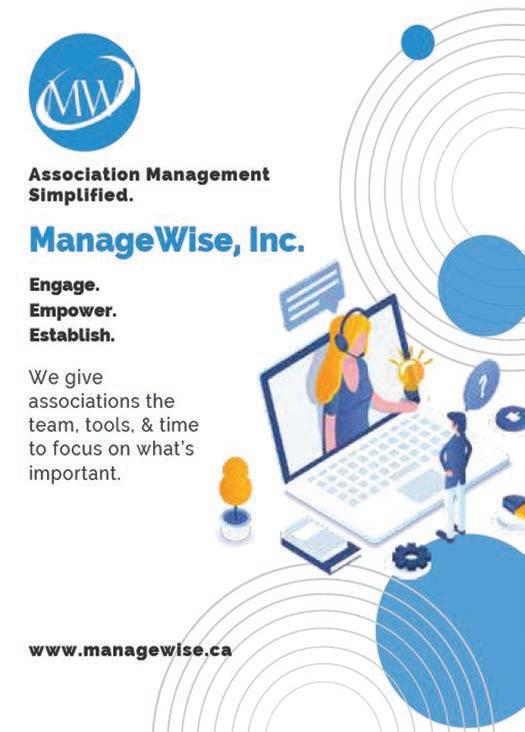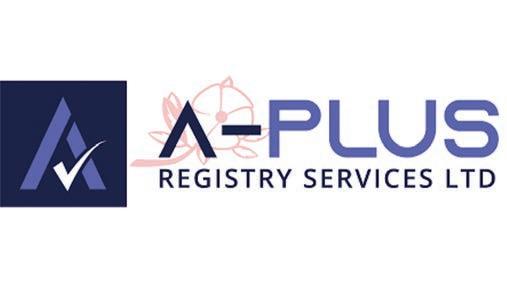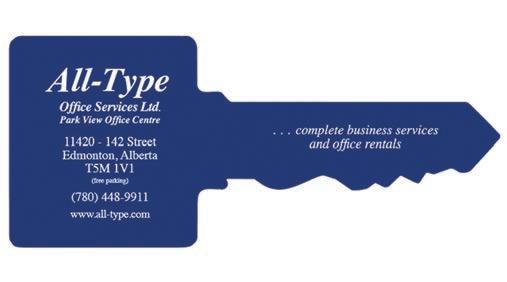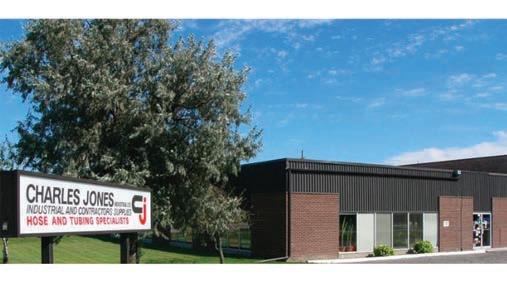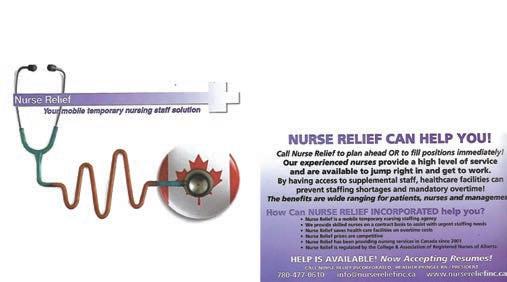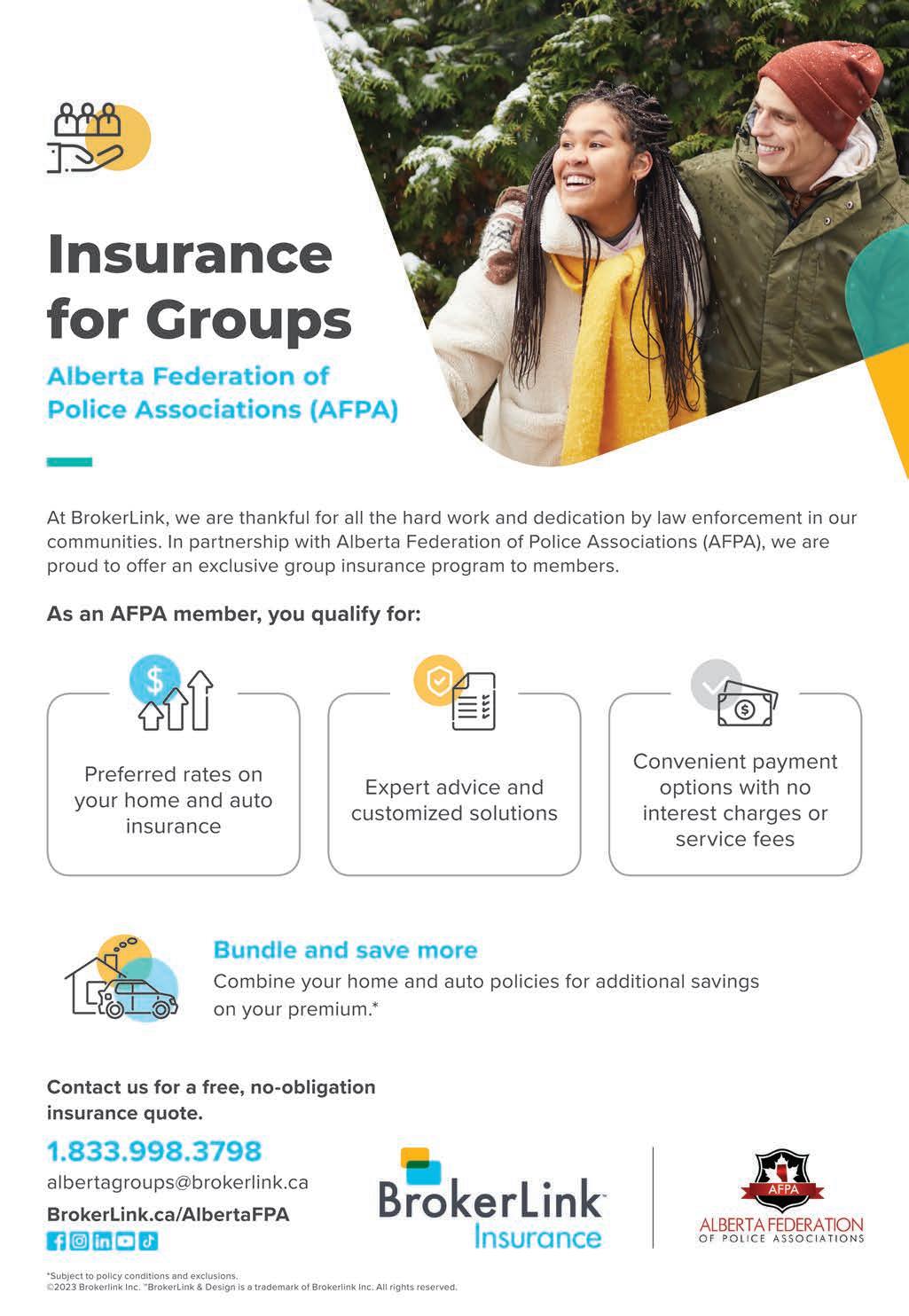

Alberta Police Beat



Alberta Police Beat
ALBERTA FEDERATION OF POLICE ASSOCIATIONS 2025 BOARD OF DIRECTORS
GRAHAM ERNST
President of AFPA
Director of Calgary Police Association
ALEX SHAW
Vice President of AFPA
Director of Edmonton Police Association
JASON RICHMOND
Secretary/Treasurer of AFPA
Treasurer of Lethbridge Police Association
MARK FLYNN
Director/Editor of AFPA
Vice President of Medicine Hat Police Association
NADIA DEN BOON
Director of AFPA
Director of Edmonton Police Association
BRENT HUTT
Director of AFPA
Director of Calgary Police Association
NICOLE MARTIN
Director of AFPA
Vice President of Lacombe Police Association
HOWARD BURNS
Executive Director
The opinions and comments expressed in Police Beat are those of the writers and are made without prejudice. They are not necessarily the position of the AFPA or its Executive. The inclusion of third party advertisements does not constitute an endorsement, or recommendation by the AFPA board or its membership. Reproduction of articles and artwork is strictly prohibited without the prior written consent of the AFPA. Publication Agreement #42846013
Designed & Published By:
Police
FROM THE PRESIDENT
Graham Ernst
FROM THE VICE PRESIDENT
Alex Shaw
FROM THE SECRETARY/TREASURER
Jason Richmond
FROM THE DIRECTOR/EDITOR
Mark Flynn
FROM THE DIRECTOR
Nadia Den Boon
FROM THE DIRECTOR
Nicole Martin FROM THE DIRECTOR
Brent Hutt
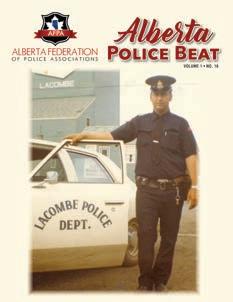


GBill 53: A New Tool in the Fight Against Addiction and Crime
reetings AFPA members. I hope this article finds you well and truly rested after a summer of sun, sand, and copious amounts of your favourite beverage. It has been a relatively uneventful summer in the union world, and if I’m perfectly honest, I think we can all appreciate a bit of a lull. In my 8+ years as a Director with the Calgary Police Association, I have seen the rise and fall of tensions within the CPS many times. Sometimes these moods shift due to a change in personnel, and sometimes it’s a change in circumstances, but there’s no denying the relief it brings and the boost to morale that comes with it. Thank you all for your continued support and words of encouragement as we fight to make sure your voice is heard with the Executive, respective Police Commissions, City Halls and the Legislature.
As I alluded to above, I’ve also been writing articles for police magazines for a long time. If I’m perfectly honest, at this point it can be a struggle to come up with new and interesting topics. The addition of Artificial Intelligence and the tools that have come with it have opened up some new avenues and assisted with collecting content for some of my articles. If you’ve been reading the 10-4 magazine or Police Beat magazine for a long time, you’ll note that each of the board members has a particular style, and often we end up writing similar articles on the most exciting thing going on in our respective associations.
While I’ve been known to do this too, I’ve always tried to provide you with information about union business and its related facets. Some of you will be able to pick out the portions of my article below that were drafted with the help of AI. Mostly, I use it to collect the details I need, and then I add my own verbiage and tone. In my continuing effort to educate our membership when I can, I thought some more information about a little-talked-about bill the Government of Alberta is working on—and which will affect all of us greatly—would be a new and interesting place to start. My topic today is Bill 53: The Compassionate Intervention Act.
In April of 2025, Alberta took a bold step in addressing the province’s escalating addiction crisis with the passage of Bill 53: The Compassionate Intervention Act. The legislation introduces a framework for mandatory addiction treatment for individuals whose substance use poses a serious risk to themselves or others. In simple terms, this means that if a person’s drug addiction is causing them to be a problem to themselves and to society at large, they will be forced to get some help.
As cops, I think I can safely say that we all resoundingly said “FINALLY!” As each of us has probably had this conversation a million times around the lunchroom table, it is my firm belief that this is the only reasonable way—in today’s current environment of “hug a thug” mentality—that the public can expect to see a difference. People in the throes of severe drug addiction very rarely choose to get out on their own. Despite the fact that the only real cure for addiction is a person’s individual choice not to use again, this bill at least takes a shot at doing something different.
So what does it propose to do? Bill 53 allows family members, health professionals, and/or the police to apply for a compassionate intervention order. If approved, individuals can be detained for assessment and, if necessary, ordered into secure treatment for up to three months or communitybased treatment for up to six months. The process includes legal safeguards, which include hearings within 72 hours and regular care plan reviews.
Police are almost always the first responders to the consequences of addiction—overdoses, property crime, violent incidents, and public disorder. In 2024 alone, Alberta recorded 1,414 drug poisoning deaths, most linked to opioids. I’m sure that most of you working anywhere near the frontlines have either experienced or heard of the same person receiving life-saving Narcan from either us or the paramedics in the same day.
Continued on page 6
Occasionally, several times in the same day. I’ve personally spoken to many firefighters and medics who have expressed their shared rage at the repeat nature of this problem. These incidents build resentment at a minimum and run the risk of eliminating compassion for the people who are struggling with their addiction. Not to mention the massive drain on resources that this rinse-and-repeat cycle causes. If you’ve ever wondered why it can take so long to get an ambulance, look no further than drug-related calls.
Below are a few of the benefits the Province is hoping to see as a result of this legislation:
- Reduced repeat calls: Chronic users often cycle through emergency rooms, shelters, and the justice system. Mandatory treatment can break that cycle.
- Improved officer safety: Officers frequently encounter individuals in crisis who are unpredictable and sometimes violent. Stabilizing these individuals through treatment reduces risk.
- Supports community safety: Addiction-driven crime— shoplifting, break-ins, vehicle theft—drops when individuals receive structured care.
In May 2025, Calgary Police arrested 29 suspects and laid 160 charges in a downtown drug-trafficking operation. Many suspects had prior records and were linked to opioid and methamphetamine trafficking. Of those, most declined voluntary treatment—highlighting the need for mandatory options like Bill 53.
In 2023, Alberta recorded 1,867 opioid-related deaths, the deadliest year on record. Last year it was 1,414 deaths. Not a great improvement. As real-world experts, we know the link between drug use and increased property crime, assaults, and public disorder as individuals commit offenses to fund their addictions. This should not be a surprise to any one of us.
Why should this matter to you? Because it is the first significant effort at trying to address this problem in a new way. If enacted properly, Bill 53 can begin to address root causes of crime rather than just symptoms. In theory, that should also mean fewer repeat calls for officers. Maybe then we can turn more of our focus back on proactive policing.
In addition, I cannot imagine I’m the only one extremely frustrated with dealing with addicted individuals. So much so, that I realized it was affecting my performance at work. I began to limit my interactions with people clearly suffering from addiction to try and lower my burnout and limit my exposure to trauma. Ultimately, I believe that my frustration, anger, and sadness were negatively affecting my wellness. At a minimum, my compassion is at an all-time low, and I don’t feel good about that! I’ve always prided myself on having patience and care for
people, and the years of banging my head on this particular wall have taken their toll.
Finally, by supporting compassionate, health-based solutions, the police can enhance our image as a partner in community well-being. Neither we nor the Government want to come out of this looking like the bad guys. The long-term solution to the problem is likely not strict crime and punishment. There will have to be a balance between enforcement and care for the individual to be most effective.
Critics argue that involuntary treatment infringes on rights and may not guarantee recovery. However, the alternative—leaving people to die on the streets—has proven catastrophic. The very real and very disgusting results of allowing people to live in this state of addiction have led to feces in public spaces and in Calgary at least, a downtown that continues to be a ghost town on the weekends.
Is it truly more humane to allow people to live in a perpetual state of crushing addiction, rather than forcing them to get clean? Ask yourself whether it is kinder to force someone into treatment who doesn’t want to go, or to let them live in squalor, overdosing every few days.
Bill 53 includes built-in protections and will likely be watched very closely by civil rights proponents. To ensure the actions taken are safe and reasonable, legal safeguards, independent oversight, and regular reviews to balance rights with urgent health and safety needs have been built into the legislation. That seems pretty reasonable to me!
It is estimated that the associated cost of addiction in Alberta— health care, justice, and productivity—is approximately $7 billion dollars per year. This is an astounding number and needs to be addressed. In the first wave of effort, the Province intends to build two 150-bed secure facilities in both Edmonton and Calgary (completion is set for 2029). With this program set for an investment of $180 million dollars over three years, you can see that would still leave a lot of wiggle room for additional supports.
The bottom line is that Bill 53 is not a silver bullet. But it may be a critical tool in Alberta’s fight against addiction and its devastating social impacts. For police, fire, EMS, and peace officers who interact with this growing population on a daily basis, it means fewer overdoses, fewer crime scenes, and safer communities. I believe that at a minimum, it will save lives and reduce harm.
As Albert Einstein is often quoted as saying, ‘The definition of insanity is doing the same thing over and over again and expecting different results.’ Bill 53, at least, is trying something new. Here’s hoping! Play safe.

Winds of Change
With the summer fully in the rearview and now looking ahead to the fall and hockey season starting up, this also goes for AFPA, as there are some substantial changes around the corner!
Being in the VP role since May, it’s been one thing after another, and with policing in the province, change is constant. In July, the UCP government announced the creation of the Alberta Sheriffs Police Service, and our AFPA Executive Director Howard Burns has been in contact with the Sheriffs about starting their own Association, along with maintaining continued engagement with Grande Prairie about creating their respective Association.
One of the biggest issues that will affect all AFPA members will be going to the Supreme Court of Canada in October. The dates are set (Oct. 7th and 8th) to hear arguments related to the expungement of police disciplinary records after 5 years, with the respondent – John McKee, arguing that expunging discipline records is akin to suppressing the past and as if it never existed, but the appellant – the Edmonton Police Service is arguing that disclosure should be limited to documents actually in the possession of the Crown in the specific prosecutorial file and not extend to unrelated or historical misconduct records. This includes police disciplinary information that should be treated like other criminal history records, only disclosed under specific circumstances. Lastly, this decision contradicts McNeil by effectively requiring disclosure of pardoned or expunged records, undermining rehabilitation, and provincial authority over policing.
I wrote about this issue in the spring edition of the Police Beat, and this fall this issue will finally be front and center with potential impacts of this decision being felt within police associations across the country.
When a police officer sits – rather, stands, in the witness box providing evidence to the court related to the matter they
are involved in, that member, who is already held to a higher standard because of the role they play in society, has to swear or affirm that they are going to provide the whole truth. As in all aspects of their role as a police officer, the member faces yet another layer of scrutiny, with nowhere to hide. Members probably don’t testify as often as you might think, and that topic is for another article all together, but once you enter the witness box, all bets are off and the spotlight is fully on YOU, the member.
Testifying and providing evidence in court could have lasting implications both with the court and how it views your current testimony, any future court matters, and also within that member’s own police service. Yes, our members can restrict an individual’s Charter freedoms with reasonable and probable grounds related to authorities provided from each set of laws related to municipal, provincial and federal statutes, however, with that authority comes layers upon layers of oversight, including public scrutiny, court scrutiny, and internal police scrutiny. All this scrutiny and oversight is ultimately captured under the Criminal Code, Police Act, and within internal policies and procedures of that members’ police agency.
Providing that evidence in court and being the center of attention for however long it takes, is quite daunting. Yes, you‘ve taken an oath when you became a police officer and you carry that oath with you, day in / day out, including with every interaction you have with a member of the public. I am not a lawyer; however, some online research shows me that lawyers also have to take an oath - three (3) oaths apparently - the ‘Oath of Allegiance’, the ‘Oath of Faithful Performance’, and ‘Oath against Improper Conduct’. As for Judges, it looks like they take two (2) oathsthe ‘Oath of Allegiance’ and the ‘Judicial Oath’. With everyone taking oaths to perform their jobs and roles within the criminal justice system, let’s not forget one thing – witnesses. For the purposes of this scenario, I will deal specifically with police officers as witnesses. As a sworn member in the witness box,
Continued from page 7
YOU are the only one standing in that courtroom, with your notes and reports that will either swear or affirm in court - not the lawyers or judges.
That brings me back to this Supreme Court hearing, where the looming decision could have a huge impact on how you give evidence and what questions you could face when providing evidence. Being cognizant and aware of the questions that could be posed to you, you may end up being asked about a discipline record from over 5, 10, or even 20 years back. This Supreme Court decision could also have implications on how the Crown moves ahead with a file or not, specifically based off of who is involved, rather than the merits of the case. This Supreme Court decision will leave a lasting imprint, one way or the other, on how many more layers of scrutiny members could ultimately face while giving evidence in court. We can only sit and wait and see what comes out of 301 Wellington St. in Ottawa this fall.
The other huge news coming down the pipe at the end of the year in December is the creation and start of the Police Review Commission (PRC). The PRC is the centralized complaints organization for the Province of Alberta, and it gets underway in December 2025. The PRC is as ready as it will ever be, at least for now, and they are rolling out the organization full steam ahead! With professional standards units in all municipal
agencies across the province still taking files until the PRC start date in December, those areas will continue to take, assess, and investigate those files through to conclusion, as well as continue to chip away at the file backlog they have, while the PRC will start taking files from December onwards.
I’ve met with the PRC on a couple of occasions lately in order to get an update on the progress the PRC is making. From my understanding, both CPS and EPS denied secondments to the PRC, so we will undoubtedly keep an eye open for who the PRC hires as investigators and how quickly the PRC can move a file forward to conclude it in an efficient and timely manner. I’m sure there will be some hiccups along the way, and we may not always agree on everything, but I’m hopeful the PRC will make a difference and have a positive impact on the overall efficiency that we have asked for with our own specific professional standards units. This is definitely an intriguing concept of centralizing complaints against police members, and one we are keenly aware of as we wait to see what impact it will have on our members.
Thanks again for your time and stay safe, but most importantly - take care of each other!
All the best for a great fall!
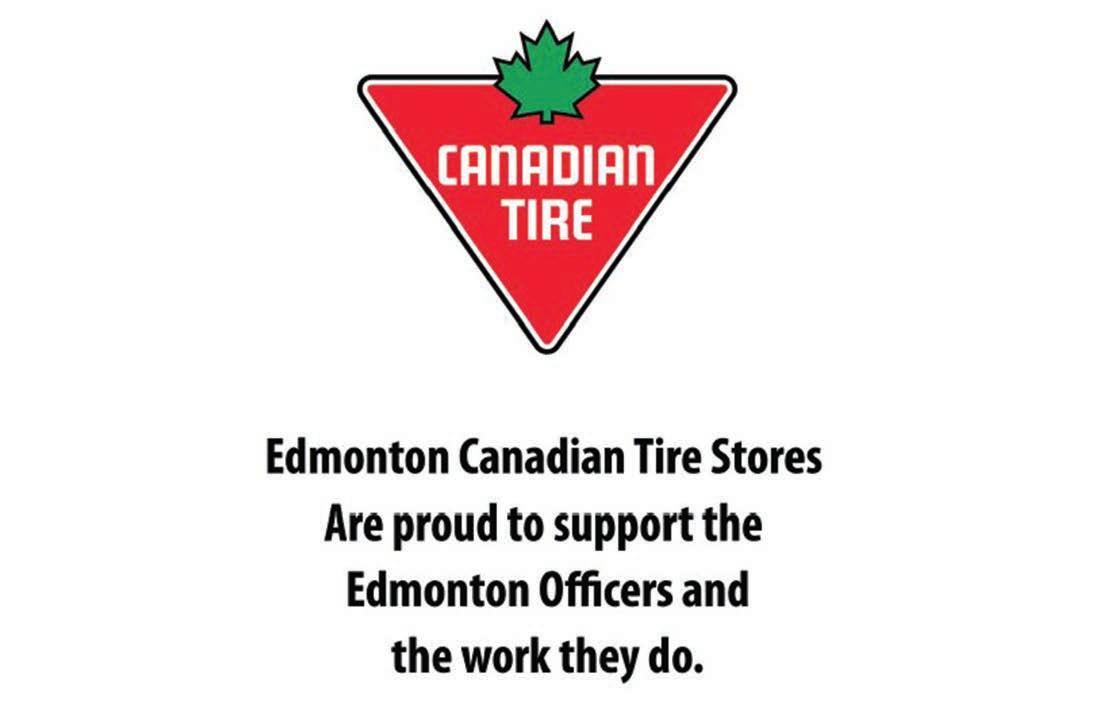

From the Secretary / Treasurer
Police Governance in Alberta: Why Good Relationships Between Police Commissions and Police Associations Matter
Recently I have been in communication with our Police Commission and learning about the people and roles they have within it. I was never too sure what the Police Commission did but am starting to understand more about what their role is. In Alberta, police commissions play a critical role in overseeing local police services. They’re responsible for setting priorities, working with communities, and holding the police accountable—all without getting involved in day-to-day operations. At the same time, police associations represent the front-line officers doing the work, and they have a deep understanding of what’s happening on the ground. Now more than ever, it’s becoming clear that when police commissions and police associations have a strong, respectful relationship, the entire system works better—for the officers, for the commission, and most importantly, for the public.
When you think about it, police associations have direct access to the people doing the actual job every day. These are the men and women responding to calls, dealing with emergencies, and interacting with the public in real time. Associations hear about challenges and changes long before they become visible to the commission, public, or sometimes the executive branch. So when there’s a good relationship between the association and the commission, that line of communication opens up in a way that allows for more informed decisions at the governance level.
It’s not about trying to influence or interfere with oversight—no one wants that. It’s about sharing information, building trust, and making sure that those making strategic decisions have a full picture of what’s really happening in the field. For example, if officers are facing a spike in mental health-related calls without enough resources or support, the association is usually the first to hear about it. And if they can bring that to the commission’s attention early, it gives the commission a chance to respond— maybe by adjusting their policies, reallocating resources, or
advocating for funding. That kind of proactive governance can prevent small issues from becoming big problems.
In many ways, police associations serve as a nest of front-line information—an organized, centralized source of what’s really going on inside the service. Instead of governance bodies relying solely on top-down reports or filtered summaries, they can tap into this nest of real-time insights that reflect what officers are actually experiencing. That connection makes the commission’s work more grounded, more relevant, and far more effective.
And it works both ways. Commissions are often tasked with implementing changes that come from public feedback or political directives. If the association is involved early in those conversations, they can help the front-line officers understand why certain changes are being made, and they can give honest feedback on what might work—or what needs to be adjusted before it hits the ground. That two-way communication helps avoid resistance and confusion. It also shows officers that their voices are being heard, which goes a long way in building trust and cooperation.
One thing that often gets overlooked is how important this relationship is during times of transition or crisis. Policing is going through a lot of change right now—not just in Alberta, but across the country. Public expectations are evolving, mental health and community-based responses are becoming a bigger part of the job, and officers are under more scrutiny than ever. For commissions to navigate these changes effectively, they need the insight and support of those who understand the culture and the operational realities of policing. That’s the police association.
When commissions and associations have a working relationship based on mutual respect, it also helps the public
Continued on page 10
see that the system isn’t divided—that everyone is working toward the same goal: a safe, fair, and effective police service. It sends a strong message that accountability and support can go hand in hand. That doesn’t mean there will always be agreement. In fact, it’s healthy when there’s space to challenge ideas and debate decisions. But those conversations are far more productive when they’re built on a foundation of communication and shared purpose.
It’s also worth saying that officers themselves benefit from seeing their association involved at that level. It helps them feel connected to the bigger picture of what’s happening in the organization. It also gives them a voice in decisions that affect their work, which can reduce frustration and improve morale.
At the same time, commissions have to maintain their independence and ensure they’re fulfilling their mandate to represent the public interest. No one is suggesting that those lines get blurred. But independence doesn’t mean isolation. You
can stay objective while still listening, engaging, and seeking out the perspectives of those who live the job every day. In fact, that’s what good governance looks like—decisions based on evidence, input, and an understanding of both policy and practice.
The bottom line is this: strong, open relationships between police commissions and police associations aren’t just a “nice to have.” They’re essential. They help identify issues early, build trust between officers and leadership, and create space for thoughtful, informed decision-making. In a time when policing is facing complex challenges and rising public expectations, that kind of relationship can make the difference between reactive leadership and proactive, forward-thinking governance.
Both commissions and associations ultimately want the same thing: a police service that works for the community and for the officers who serve it. When they work together— openly, respectfully, and with a shared sense of purpose— everybody benefits.

Recruitment & Retention
As police officers in Alberta, we’ve likely all heard the term “recruitment crisis” so often that it almost feels like background noise. Every conference, police commission briefings, and even conversations around the bargaining table seem to circle back to it. But here’s the truth: this is not just a numbers game, and recruitment is not the only factor affecting our numbers. Retention is an equally pressing concern. The real challenge is attracting the right people to the profession, and just as importantly, keeping them engaged, supported, and committed for the long haul.
The New Reality
Today’s recruitment landscape looks different than it did a generation ago. Millennials and Gen Zers who make up the bulk of today’s applicants are motivated by different priorities than many of us were when we joined. Job security and pensions remain important, but they are no longer the only draw. Younger officers want a balance between their careers and personal lives. They want meaningful work, mental wellness supports, and flexibility for family commitments. As someone who started in an era when new members were expected to work Christmases for their first four or five years, it often took that long before you had earned enough seniority to take time off patrol. The solution to meeting today’s needs does not seem obvious. With our current staffing shortages and what feels like steady overtime call-outs, I don’t know how even our senior members on patrol are able to use their time off.
When I talk to potential recruits and younger members, one of the first questions I hear is not “what’s the salary?” but “what supports are in place for me and my family if something goes wrong?” That’s a profound shift in mindset, and one that agencies and associations must acknowledge if we want to remain competitive in the recruitment market.
Retention Pressures
Recruitment is only half the battle. Retention is where we win or lose. Officers are leaving earlier in their careers, sometimes
within five years, because the strain outweighs the benefits. The reasons for this are not hard to pinpoint as most of us have lived them firsthand. Burnout comes from taking on too much, or too many overtime shifts to help cover the short-staffed patrol teams. The complexity of calls, investigations, and associated policies continues to grow without an increase in resources, creating what feels like a constant ‘do-more-with-less’ expectation.
In recent years, we have also seen a decline in respect and appreciation for what we do from some vocal members of the public. While we know those with the loudest voices on social media don’t speak for all, it is difficult to ignore the anti-police sentiment from small portions of our communities.
In addition, it is no secret that police officers generally make excellent employees, and recruitment of current members into other public or even private sector employment is a real concern. Other industries are able to offer similar stability, pay, and benefits—without many of the negative aspects of law enforcement or the exposure to trauma.
Add these together, and you have a recipe for frustration and attrition. It’s not about whether recruits can survive training, it’s about whether they see policing as a career they want to stay in, and make the choice to do so every day.
What We’re Doing (and Not Doing)
There are bright spots appearing over the horizon. Cadet classes are starting to grow again, and associations across the province have pushed hard for better mental health supports. Some services are experimenting with creative schedules to give officers a better work-life balance.
But gaps remain. Career progression opportunities can feel limited, with specialized units shrinking or collapsing under staffing pressures. Our recruitment methods often look like they’re stuck in the past with slow, paper-based processes, outdated background check models, and generic marketing
Continued on page 12
Continued from page 11
campaigns that don’t resonate with younger generations. If we want to compete for the best and brightest, we need to be modern, fast, and authentic in how we attract talent. We also need to look inward and ask whether our internal cultures encourage people to stay once they’ve joined.
Beyond the Numbers
Here’s the hard truth: recruitment isn’t just about how many cadets you hire, it’s about how many officers you keep after three, five, or ten years. Numbers on a staffing chart mean very little if the revolving door keeps spinning.
Retention depends on creating an environment where officers feel:
• Valued: not only through fair wages and benefits, but through recognition and opportunities for growth.
• Supported: with accessible mental health resources, mentorship, and manageable workloads.
• Heard: through associations that amplify their voices and push for meaningful changes at the bargaining table and in legislation.
If we ignore these factors, no number of new recruits will fix the long-term sustainability of policing in Alberta.
The Role of Associations
If we were to only look at this issue as one of employer and employee concerns, how do Police Associations help? We are the bridge between members and the agencies they serve under. It is our job to ensure that recruitment strategies don’t just look good in a press release but reflect the values that our new hires should come to expect throughout their careers.
We can also push for provincial standards that level the playing
field. Right now, officers in different municipalities doing the same work can receive vastly different wages and benefits. That disparity feeds the retention crisis by encouraging lateral moves or exits from the profession altogether. A provincial baseline would ensure every officer feels valued, regardless of shoulder patch or postal code.
Finally, associations can help reframe policing as a career worth investing in, not just for the pension at the end, but for the purpose, camaraderie, and service it represents. By advocating for fair contracts, robust mental health supports, and modernized workplace practices, we make the profession more appealing not only to current members but to future recruits.
Looking Forward
Recruitment and retention will define the future of policing in Alberta. If we treat it as a numbers problem, we will continue to chase our tails, patching holes with overtime and hoping new cadet classes stick. But if we treat it as a people problem, one that requires listening, adapting, and investing, we have a chance to build something stronger.
It’s not just about filling uniforms; it’s about creating a profession where people want to stay, grow, and serve. That means embracing generational change, supporting officers at every stage of their careers, and ensuring no one feels left behind.
The road ahead won’t be easy, but one thing hasn’t changed: policing is still a calling that demands the best from those who answer it. Our job, as associations and as colleagues, is to make sure the profession gives its best back in return.
Stay safe and take care of each other.



Building Bridges to the Next Generation Through Education Director of Edmonton Police Association
For the past three years, I’ve been teaching police studies courses here in Alberta through MacEwan University. When I first started, I thought my role would mostly be about passing on knowledge—teaching the foundations of Canadian policing and justice, and the role police play in keeping communities safe. But in return, my students have given me something I didn’t expect: a growing hope for the future of policing
From Opinions to Critical Thinking
Most students come into the classroom with opinions shaped by social media, the news, or family conversations. Some are skeptical of police, some are supportive, and some don’t really know what to think. Over time, though, I’ve seen their perspectives shift.
Instead of accepting surface-level ideas, they begin digging deeper. They ask: Why do officers respond the way they do? How do you balance safety with fairness? What does justice actually look like today—and what should it look like?
Watching young people move from quick judgments to thoughtful analysis is one of the more rewarding parts of this work.
Seeing Officers as People
As students sharpen their critical thinking, their view of police officers also changes. At the start, some admit they don’t fully trust the police. But as we talk through real cases and ethical dilemmas, they begin to see the people behind the badge.
That realization matters. It takes policing out of the abstract and puts it into human and young person terms—neighbors, parents, and community members doing a tough job.
This isn’t just something I notice in the classroom. Research
backs it up. The Public Perceptions of Policing in Alberta report (Prentice Institute, 2023) found that about 62% of Albertans believe police are doing a “good” or “excellent” job. At the same time, many adults believe youth don’t trust police as much—roughly 43% disagreed that young people have high trust. My students, though, suggest a more complicated reality: yes, some carry skepticism, but many are open to building understanding once they’ve had the chance to ask questions and get real answers.
Wanting a Stronger Justice System
Another theme that comes up often is frustration with the justice system. Students talk about repeat offenders, court delays, and victims who feel left behind. But what strikes me is that their frustration is paired with hope. They want solutions. They want a system that works fairly and efficiently. A system that enforces consequences for actions.
That matches broader public opinion. In a 2023 Alberta Municipalities survey, respondents rated improvements to the justice system and stronger social supports as the most impactful ways to reduce crime—more so than creating a provincial police service. Like my students, Albertans want fairness and accountability, not just surface-level changes.
Building Real Connections
Students also say they want stronger relationships with police. They want officers who are approachable, engaged with youth, and willing to listen.
Those kinds of interactions are exactly what the Edmonton Police Service highlighted in its Young People Strategy 2021–2024, which calls for treating youth in developmentally appropriate ways, focusing on prevention and support as much as enforcement. The fact that my students echo those same values tells me the message is getting through.
Continued on page 14
Of course, not every young person in Alberta has positive experiences. A 2023 University of Lethbridge study found that Black youth in southern Alberta often reported dismissive or hostile encounters with police, leaving them feeling less safe and less connected to their communities. That’s an important reminder: trust isn’t universal, and for some—especially in marginalized communities—there’s still a long way to go.
Safety: The Common Ground
Despite different perspectives, one theme always comes up: safety. Students want to feel safe and secure in a world that can look chaotic and uncertain—at least through their social media feeds. They want safe neighborhoods, safe families, and safe futures. And that’s something we all want—police and community alike.
When I think about the future of policing in Alberta, I don’t just think about reforms, oversight boards, or survey results. I think about the students I’ve taught. I see future officers, lawyers, social workers, and community leaders who care deeply about fairness, respect, and collaboration.
Teaching police studies has shown me that education isn’t just about textbooks—it’s about trust, conversations, and building bridges. Often, our best lessons come when we go off-script
and dig deeper into their questions. If my students are any indication, Alberta’s next generation is ready to do their part to make policing stronger, fairer, and more connected to the communities it serves.
References
Alberta Municipalities. (2023, February). Public safety & policing survey report. https://www.abmunis.ca/system/files/2023-02/ Public%20Safety%20%26%20Policing%20Survey%20Report%20-%20 Feb%202023.pdf
Edmonton Police Commission. (2025, June). Public survey report. https://edmontonpolicecommission.com/wp-content/ uploads/2025/06/Leger-Public-Survey-Report.pdf
Edmonton Police Service. (2021). Young people strategy 2021–2024. https://www.edmontonpolice.ca/-/media/EPS%20External/Files/ Documents/CommunityInitiatives/EPS0041YouthStratPlanFINIWeb.pdf
Prentice Institute for Global Population & Economy. (2023, April). Public perceptions of policing in Alberta: Full sample report. https:// prenticeinstitute.ca/assets/volumes/pdf/1.1-Full-Sample-PPPReport-2023-04-06.pdf
Prentice Institute for Global Population & Economy. (2023, April). Urban perceptions of policing in Alberta. https://prenticeinstitute.ca/ assets/volumes/pdf/1.2-Urban-PPP-Report-2023-04-11-v2.pdf
Turay, A. (2023). Black youths’ sense of belonging in southern Alberta: A phenomenological study of their interactions with the police (Master’s thesis, University of Lethbridge). University of Lethbridge Institutional Repository. https://opus.uleth.ca/items/6a8db407-001a46ac-b46e-170726f5964b/full


From the Director
Bridging the Badge: Retired Police Officers and the Value of Staying Connected
Hi Everyone, As summer comes to an end, I hope you’ve all had a chance to enjoy the weather and take some time to relax and recharge.
Over the last few months, I’ve been working on several events to celebrate Lacombe Police Service’s 125 years of serving our community. In the process, a few of us began exploring the Service’s history and reaching out to past members. What started as an effort to gather names and stories quickly became something more meaningful.
Connecting with retired members and hearing their stories; the pride, the challenges, and the changes over time was a reminder of a simple truth: policing is more than a career. It’s a community. It’s a family bound together by shared experiences, both good and difficult.
Maintaining those connections after retirement is not only valuable for personal wellbeing but also strengthens the policing family as a whole.
Transitioning to retirement from law enforcement is unlike leaving most careers. For years officers have operated in high stakes environments, relying on teamwork, trust, and camaraderie to get through the day. Walking away from that structure can create a void and can lead to missing a sense of purpose in daily life.
Maintaining relationships between active and retired members allows for the sharing of wisdom; years of service bring hard learned lessons that can be passed along to younger officers which help preserve institutional knowledge. Provide mentorship and guidance from someone who has actually been there as well as offer perspective and bring balance reminding members of the bigger picture during challenging times or internal struggles. These continued relationships allow officers to feel supported and reminded that they’re all part of a lasting legacy and that
the bond doesn’t end with a pension date.
How do we continue to build bridges after an officer retires?
Coffee meetups and social events: These informal gatherings create space for storytelling, sharing advice, lessons learned and laughter.
Mentorship programs: Pairing upcoming retirees with recruits or probationary members helps smooth transitions into the profession. It allows for the sharing of knowledge, the reflection on what once was and the growth of the profession as well as maintaining a place and purpose for the retiree.
Ceremonial involvement: Attending promotional gatherings, graduations or memorial services reinforces solidarity.
Volunteerism: Creating a space where retirees can assist with community outreach and crime prevention programs allowing them to stay active in service while supporting their former colleagues.
The policing profession thrives on trust, loyalty and shared sacrifice. When retirees remain connected, they remind current officers that they are not alone in their challenges. For the retiree, staying in touch can ease the transition into civilian life, minimize feelings of isolation and provide a renewed sense of purpose.
Ultimately, policing is more than a job, it’s a lifetime bond. Retired officers can carry the stories, lessons and traditions that define the profession, while current members can carry the torch forward. When the two groups stay connected, the result is a stronger, healthier and more resilient policing family.
Retirement may change the role but it doesn’t change the identity and family that was created.


Tribute at 4800 Feet
Iam writing this article following the Police Memorial in Ottawa. I have never attended this particular memorial as I typically travel to Edmonton. I felt an immense sense of pride witnessing the attendance of members from across the country as they marched in being led by dozens of motorcycles onto the Parliament Grounds. Tom Stamatakis, the President of the Canadian Police Association (of which each of us is a member) gave a fitting speech to the honour and sacrifice for each member whose named is sadly engraved on the monument.
With over a year in the Air Support Unit, I am constantly reminded of the sacrifice of Constable Rick Sonnenberg who, as we all know, was killed in the line of duty on October 8th, 1993. His death, and the amazing dedication of his sister Lisa Stinson was the catalyst to moving what was an idea being championed by the Sergeant Kevin Brookwell and others from the corners of their desk to the first use of a helicopter in Canada. I had the opportunity to sit down with Kevin Brookwell a couple of weeks ago and hear about the details of how we came to obtain our first helicopter. Most know, that aircraft was the same as was used in the filming of Speed. To date many of us, when I give a tour I have more than have never heard of that movie and now know Keanu only as John Wick The first flight crew took to the sky in July 1995, making this year the unit’s 30 anniversary.
I would be highly remiss to not acknowledge the amazing contribution of the civilian members of ASU. Our Aircraft Mechanical Engineers are without a doubt two of the best in the business. I am amazed watching them tear down the helicopter with parts carefully laid out on the hangar floor only to put it all back together in a short time to ensure it is operationally safe. Speaking of the best in the business our pilots bring tremendous experience from a variety of fields including military, firefighting and STARS. From Sandra and Kayla at the front desk and Pinky keeping our hangar safe, smart cops know we can’t do any job without our civilian support.
Our current fleet is two Airbus H125 helicopters. These aircraft are the workhorses of the airborne in law enforcement, public
sector and private industry. The first one became operational in 2020 and the second quickly followed in 2021. I credit Scotty, our Chief Engineer in securing our registration call signs of C-FCPS and C-FIVO. This is the third iteration of aircraft, but the mission has always remained the same, provide aerial support to find missing persons, catch bad guys but most importantly, do our best to assist in making sure every member goes home safe. Having one of the most complicated airspaces in Canada our flight crews must navigate constant communication with Tower, Terminal and our many channels throughout the various areas as well as the RCMP while remaining vigilant watching for other aircraft, birds and now more than ever drones.
Speaking of drones, also known as Remotely Piloted Aircraft (RPAS) most everyone is aware we have numerous drones throughout the Service and more and more of our membership are training to fly them. I have been asked by many at different levels if these drones will replace HAWCS. The answer is very simple…definitely not. Will the day arrive in the future when we have some big drone being flown by someone in a dark room? I am certain that day will come but it is definitely not in the near future. As we know, HAWCS can cross the City in a couple of minutes and be on target quickly. With the technology ever increasing I have witnessed what the new camera systems are capable of which will provide a clearer image even faster.
On one wall is the photo of every member who has been a part of the unit and contributed to its success and this unit is open to all members. Next time you are in Calgary I hope you will come to the hangar to take a tour, learn more, and ask questions.
The next time you are close to one of the helicopters please take a moment to look at the tail where we proudly display “In memory of Constable Rick Sonnenberg”.’
We will never forget. It is our duty.
Stay safe.














